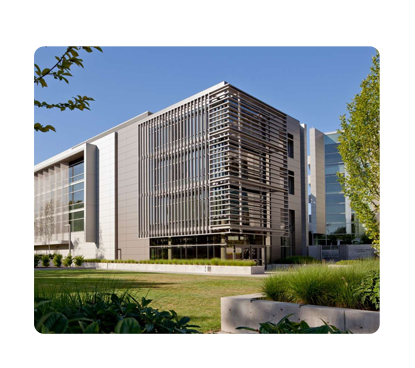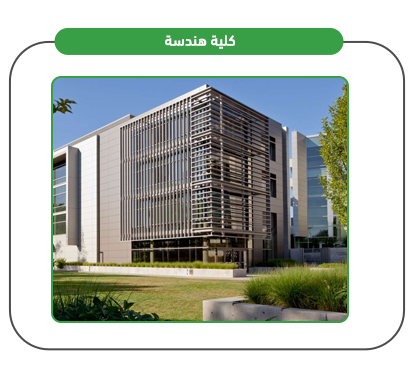The Engineering College project is an investment idea aimed at establishing a specialized academic institution that offers comprehensive educational programs in various engineering disciplines. This project relies on designing modern buildings that include advanced laboratories and classrooms equipped with the latest technologies, providing an exceptional learning environment that meets the needs of students. Additionally, curricula will be developed in line with global standards, with a focus on enhancing the technical and practical skills required for the labor market. On the other hand, the Engineering College project seeks to establish strong partnerships with local and international engineering companies and institutions to provide practical training opportunities that enrich the students’ experience and enhance their ability to apply theoretical knowledge in real-world scenarios. The project will also offer research programs and specialized workshops aimed at fostering innovation and entrepreneurship skills among students. Furthermore, the project aims to attract distinguished professors and experts in all engineering-related fields to ensure the quality of education and supervision of research. Therefore, the Engineering College project strives to prepare a generation of innovative engineers capable of facing future challenges and contributing to community development.

The Engineering College project represents an ambitious vision to establish a comprehensive educational institution dedicated to preparing qualified engineers capable of meeting future challenges. The college leverages cutting-edge educational technologies—such as virtual reality and self-directed learning—to deliver an advanced and flexible learning experience.
It places strong emphasis on practical application by forging strategic partnerships with the industrial sector, providing students with real-world training opportunities that equip them with the skills demanded by the labor market. In addition, the college develops specialized programs in emerging engineering fields such as Artificial Intelligence (AI) and the Internet of Things (IoT), while also offering advanced postgraduate programs for those seeking deeper specialization.
To encourage innovation, the college supports the establishment of business incubators that help students transform their creative ideas into successful entrepreneurial ventures. Through this integrated approach, the Engineering College project marks a qualitative leap in university education, blending theoretical knowledge with practical experience to empower graduates for effective integration into the modern job market.



Offering diverse engineering specializations that align with global market requirements.
Buildings and laboratories equipped with the latest technologies.
Partnerships with industrial institutions to provide opportunities for field training.
Curricula that keep up with the latest scientific and technological developments.
Encouraging scientific research and innovation in various engineering fields.
Enhancing critical thinking and problem-solving skills among students.
Providing services to help students integrate into the job market after graduation.
Participating in regional and global scientific competitions and exhibitions to promote innovation.
Executive summary
Study project services/products
Market Size Analysis
Risk Assessment
Technical study
Financial study
Organizational and administrative study

The Education Sector in GCC Countries
Because “Mashroo3k” Economic Consulting and Market Research Company believes in the importance of the education sector and its role in localizing national labor, it presents below the key indicators of the educational sector in GCC countries, thereby encouraging investment in this vital sector:
The total number of students in the Early Childhood Development stage (including nurseries and kindergartens) in GCC countries, according to the latest available statistics, reached 851.5 thousand students.
The number of school education students in the GCC was estimated at 9.3 million students (79.4% in the public sector and 20.6% in the private sector).
The number of adult education center learners was estimated at 181,247 students.
The number of higher education students was 2,206,446 students.
The number of early childhood education teachers was 50,647 teachers.
The number of school education teachers was estimated at 727,904 teachers.
There are 5,806 educational institutions operating at the early childhood stage.
There are 32,310 educational institutions operating at the school education stage.
Over the past years, governments in GCC countries have sought to bridge the gap between education and the labor market. They have adopted curricula that increase the share of vocational and technical education and encourage learning through modern media and technologies. It is also worth noting the increase in government spending by these six countries on education and its quality to graduate generations that meet the private sector’s labor needs.
According to the latest statistics:
Saudi Arabia spends 18.9% of its budget on education.
The UAE spends 14.8%.
Oman spends 12.2%.
Bahrain spends 9.8%.
Kuwait spends 12.3%.
Qatar spends 10.5% of its budget on education.
By the year 2023, the value of the private education market in GCC countries is expected to reach $26.2 billion.
The Global Education Sector:
The size of the global educational services market reached approximately $2,882.52 billion by the end of 2021, and global experts expect it to reach $3,191.79 billion by the end of 2022 — achieving a compound annual growth rate (CAGR) of 10.7%.
By 2026, the market value is projected to increase to $4,623.90 billion, achieving a CAGR of 9.7% over the forecast period.

By 2030, the global value of education as an industry is expected to reach $10 trillion USD.
By 2024, the global online education market is projected to reach $247.46 billion USD.
The AI-powered education market is expected to expand at a compound annual growth rate (CAGR) of 36% from 2022 to 2030.
In the year 2000, the number of pupils worldwide was approximately 657 million, and this number increased to 739 million by 2019.
In 2000, the number of secondary education students was around 452 million, rising to 601 million by 2019.